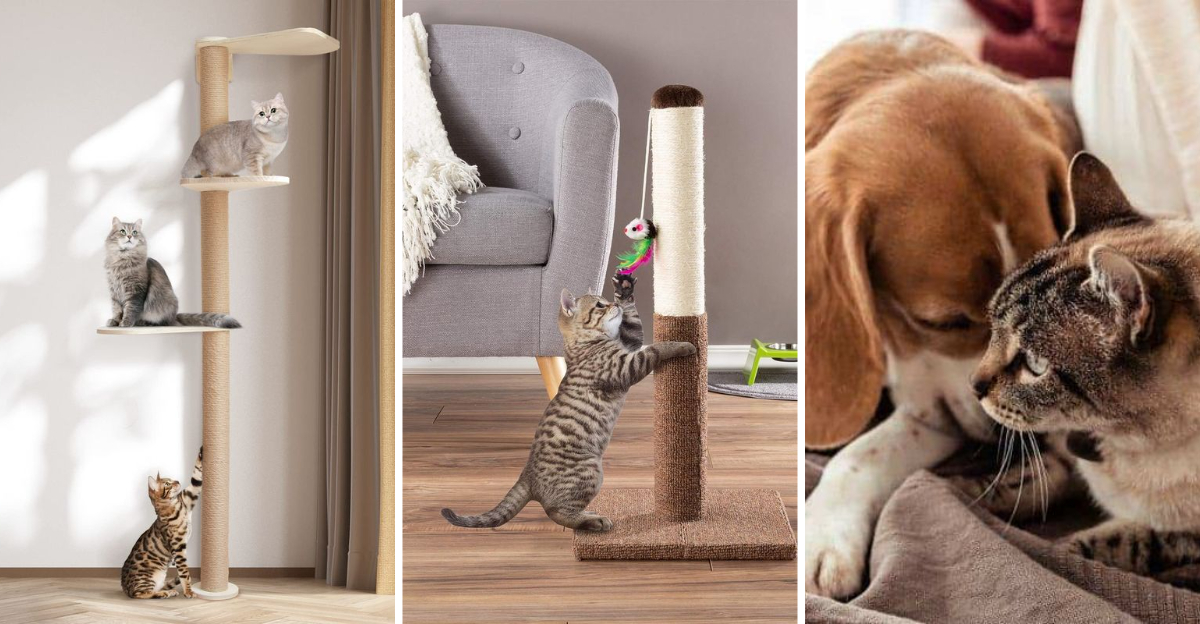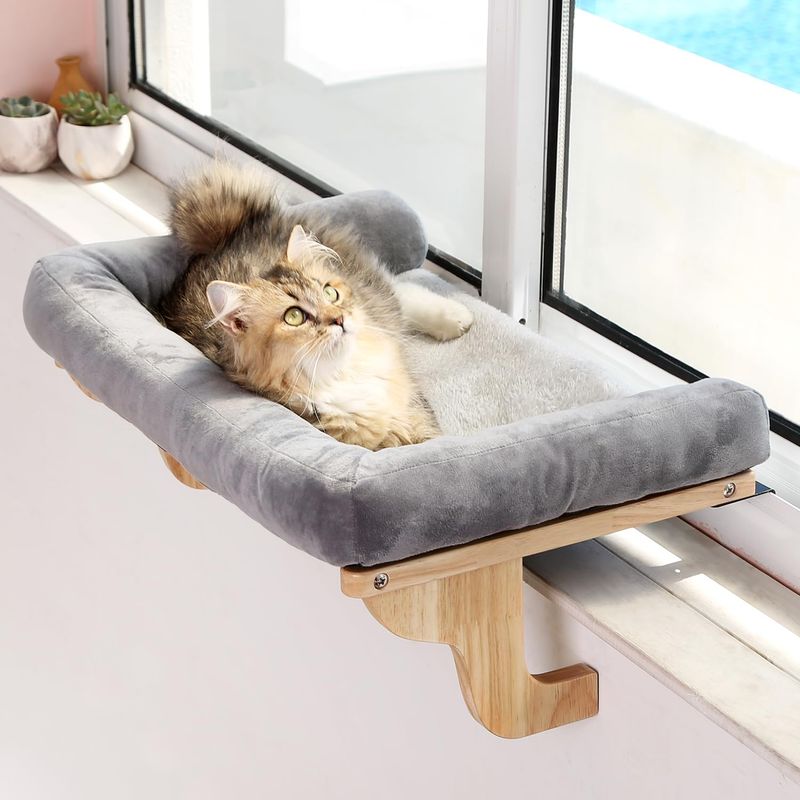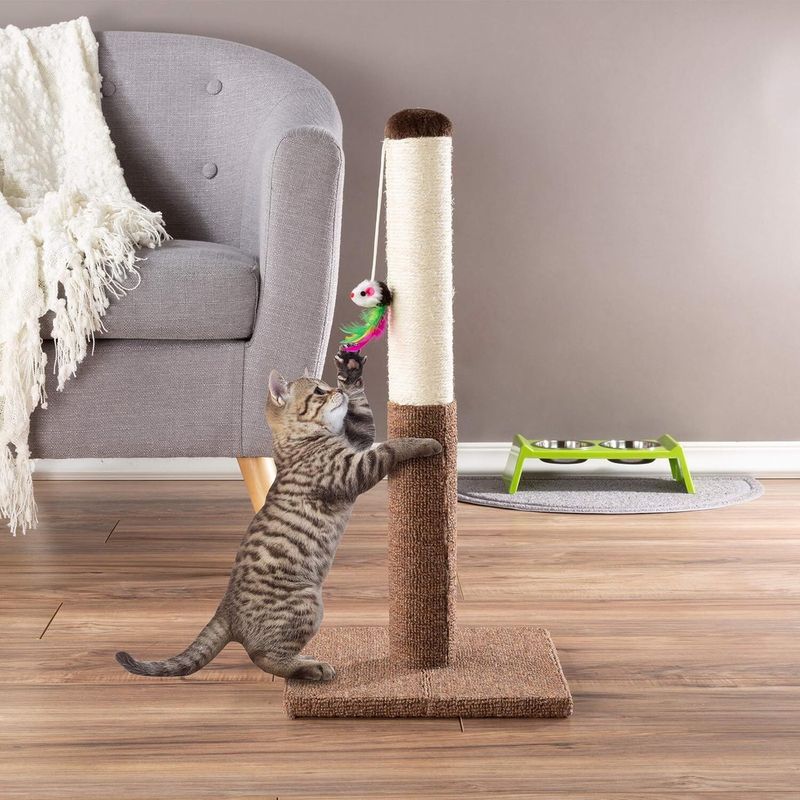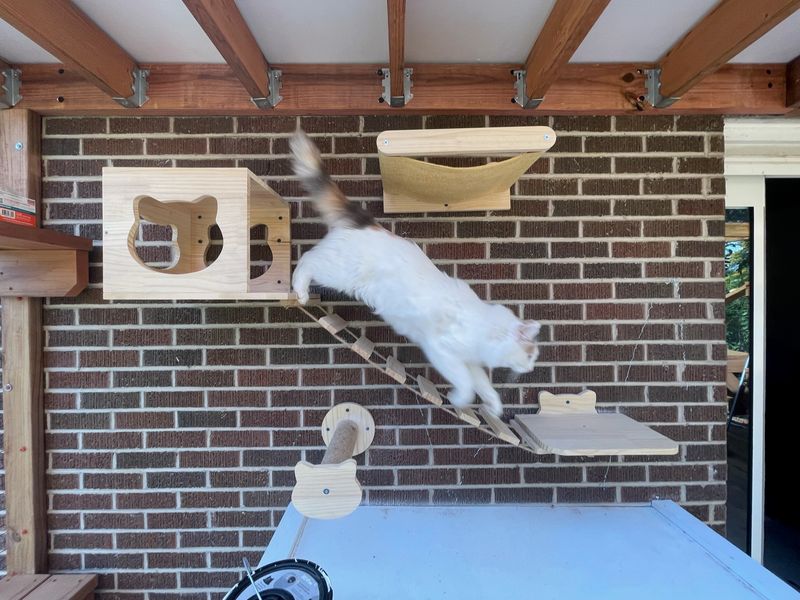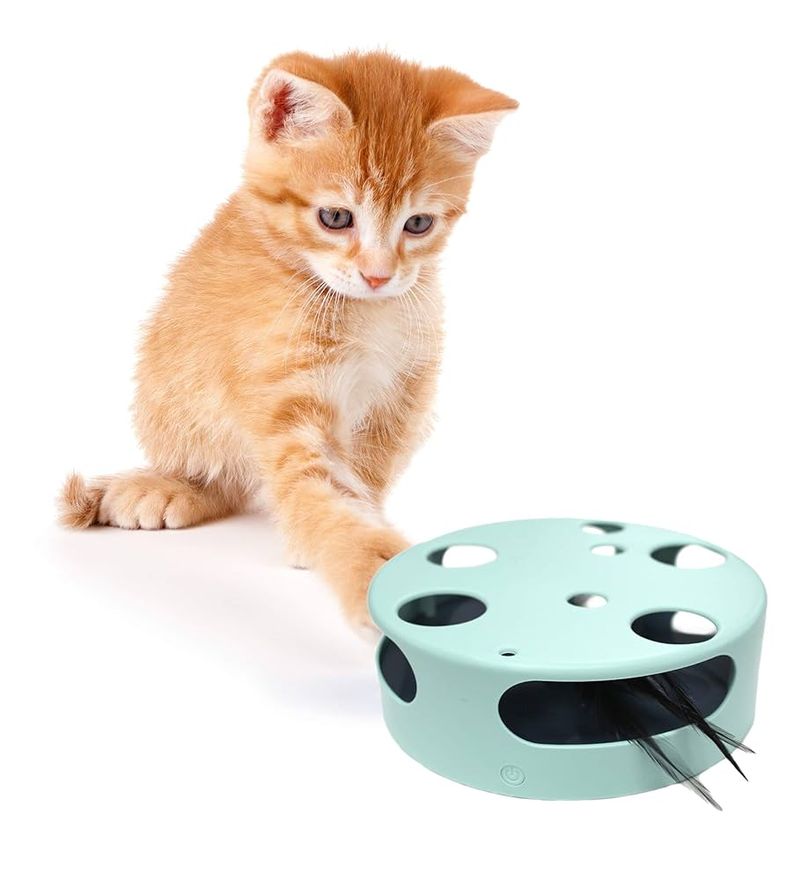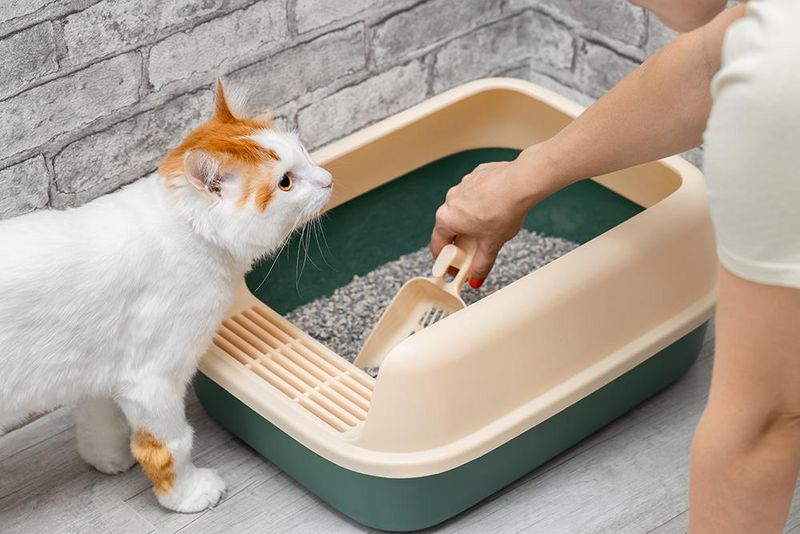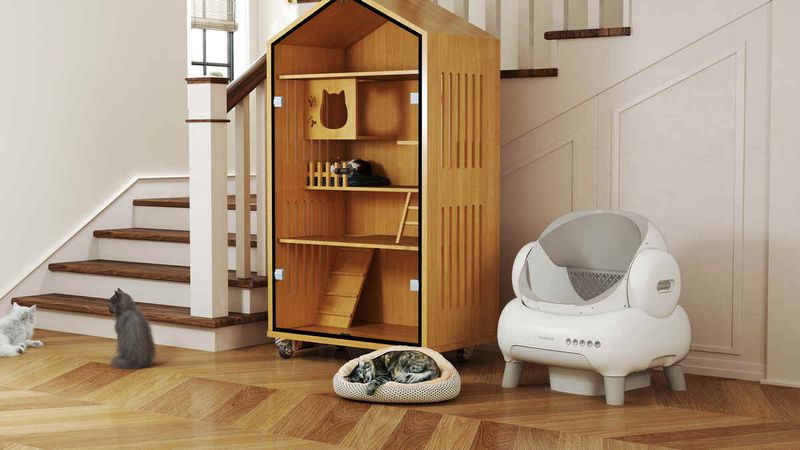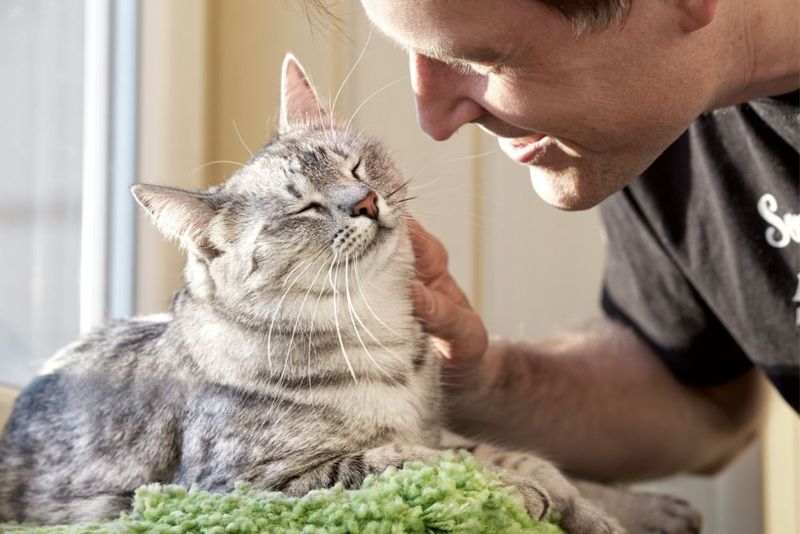📖 Table of Content:
- 1. Create a Cozy Napping Spot
- 2. Engage with Interactive Play
- 3. Provide a Variety of Scratching Surfaces
- 4. Establish a Feeding Routine
- 5. Offer High Perches and Climbing Trees
- 6. Groom Your Cat Regularly
- 7. Provide Stimulating Environments
- 8. Respect Their Personal Space
- 9. Understand Their Body Language
- 10. Rotate Toys to Keep Them Engaged
- 11. Provide a Quality Litter Box Experience
- 12. Encourage Socialization with Other Pets
- 13. Offer Safe Outdoor Experiences
- 14. Introduce New Experiences Gradually
- 15. Be Attentive to Health Needs
- 16. Ensure a Stress-Free Environment
- 17. Communicate with Them
- 18. Utilize Food Puzzles
- 19. Celebrate Their Individuality
Understanding and catering to your cat’s needs is a delightful and rewarding endeavor. Our feline companions, with their unique personalities and behaviors, communicate in ways that are both subtle and expressive. By observing, listening, and responding to these cues, you can forge a deeper bond with your furry friend. This guide explores 19 thoughtful ways to acknowledge and meet your cat’s needs, enhancing their well-being and happiness.
1. Create a Cozy Napping Spot
Cats love their nap times, and creating a cozy spot tailored to your kitty’s preference shows understanding. Whether it’s a sunny window perch or a plush blanket tucked in a quiet corner, these spaces provide comfort and warmth. A cat’s napping area is their sanctuary, where they feel safe and relaxed. Incorporating their favorite textures and scents can make a big difference. This not only contributes to their physical comfort but also their emotional well-being, as a restful cat is a happy cat.
2. Engage with Interactive Play
Interactive play is a vital part of a cat’s routine, stimulating both mind and body. Engaging with toys that mimic prey, like feather wands or laser pointers, taps into their natural hunting instincts. Daily play sessions strengthen your bond and provide necessary exercise, reducing anxiety and boredom. By varying toys and introducing new challenges, you keep their environment enriching and fun. Remember, playtime should be a shared experience, offering your cat the attention and affection they crave.
3. Provide a Variety of Scratching Surfaces
Scratching is a natural behavior for cats, aiding in claw maintenance and marking territory. Offering various surfaces like sisal posts, cardboard pads, and carpeted trees caters to these needs. Different textures and angles keep scratching interesting, encouraging healthy habits. Placing these surfaces in areas your cat frequents ensures they are easily accessible. By understanding and supporting this instinct, you prevent unwanted scratching on furniture, maintaining household harmony.
4. Establish a Feeding Routine
Consistency in feeding is crucial for a cat’s health and well-being. Establishing a routine that matches your cat’s natural eating patterns fosters trust and security. Whether you feed twice a day or opt for free feeding, ensure the food is nutritious and suited to their dietary needs. Fresh water should always be available, possibly with a fountain to entice drinking. Recognizing your cat’s preferences and adjusting the routine accordingly demonstrates care and understanding.
5. Offer High Perches and Climbing Trees
Cats naturally seek high ground to survey their environment, so providing perches and climbing trees can satisfy this instinct. These structures offer exercise and mental stimulation, while also serving as a personal retreat. By placing them in strategic locations, your cat enjoys both privacy and vantage points. High perches allow them to observe their surroundings safely, fulfilling their need for security and control. Such additions enrich a cat’s life by aligning with their natural behaviors.
6. Groom Your Cat Regularly
Regular grooming is not just about maintaining your cat’s coat but also a bonding activity. Brushing removes loose fur, preventing matting and reducing hairballs. It stimulates circulation and keeps the skin healthy. Short grooming sessions can be soothing, offering an opportunity to check for any abnormalities. Different coats require different tools, so choose brushes and combs that suit your cat’s fur type. This care ritual shows your cat that you understand and attend to their specific needs.
7. Provide Stimulating Environments
Cats are curious creatures, and a stimulating environment keeps them engaged and content. Rotating toys, introducing new scents, and providing visual entertainment like bird-watching spots are effective strategies. Enriching their surroundings with diverse textures and interactive elements prevents boredom and encourages exploration. This attention to detail in their environment reflects an understanding of their inquisitive nature. By keeping their surroundings dynamic, you cater to their need for mental and physical stimulation.
8. Respect Their Personal Space
Every cat needs personal space to retreat and relax. Recognizing these moments helps maintain their comfort and happiness. Whether it’s a quiet corner, an isolated room, or a cozy hideaway, these spaces should be respected. By allowing your cat to come to you on their terms, you build a trusting relationship. Respecting their boundaries shows you value their individuality and autonomy, essential aspects of a harmonious coexistence.
9. Understand Their Body Language
Cats communicate through body language, and interpreting these signals is key to understanding their needs. Observing ear positions, tail movements, and vocalizations provides insight into their emotions. A relaxed posture indicates contentment, while flattening ears might signal agitation. By learning these cues, you can respond appropriately, ensuring your cat feels heard and respected. Understanding their non-verbal communication strengthens your bond and enhances their well-being.
10. Rotate Toys to Keep Them Engaged
Cats can quickly become bored with toys, so regularly rotating them keeps playtime exciting. Introducing new toys or varying existing ones rekindles interest and stimulates mental activity. This practice mimics the unpredictability of hunting, aligning with their instincts. By observing which toys your cat prefers, you tailor playtime to their liking, enhancing their enjoyment and satisfaction. Keeping their play environment fresh demonstrates an understanding of their curious and playful nature.
11. Provide a Quality Litter Box Experience
A clean litter box is crucial for your cat’s hygiene and comfort. Choosing the right size, type, and placement can make a significant difference. Cats prefer privacy and a low-traffic area for their litter box. Regular cleaning prevents odors and encourages consistent use. Offering multiple options in a multi-cat household respects each cat’s preference. By ensuring a pleasant litter box experience, you contribute to their happiness and health.
12. Encourage Socialization with Other Pets
Socializing cats with other pets can enrich their lives, provided it’s done gradually and sensitively. Positive interactions with fellow animals foster companionship and reduce loneliness. Each cat has a unique tolerance level for socialization, so it’s essential to respect their pace and comfort. By observing and facilitating friendly encounters, you nurture their social skills. Successful socialization enhances their environment and contributes to a harmonious household.
13. Offer Safe Outdoor Experiences
Exploring the outdoors can be an enriching experience for cats, provided it’s safe and supervised. Leash training or secure enclosures allow them to enjoy nature without the risks. These adventures stimulate their senses and satisfy their curiosity, offering a change from indoor environments. Observing your cat’s reactions to the outdoors helps tailor these experiences to their preferences. Ensuring safety while indulging their adventurous spirit shows understanding and care.
14. Introduce New Experiences Gradually
Cats are creatures of habit, and sudden changes can be stressful. Introducing new experiences or items gradually helps them adjust comfortably. Whether it’s a new toy, a piece of furniture, or a change in routine, patience is key. Allowing them time to explore and get familiar at their own pace fosters confidence and security. This approach shows respect for their preferences and helps maintain a stress-free environment.
15. Be Attentive to Health Needs
Regular health checks are vital for your cat’s well-being. Observing changes in behavior, appetite, or appearance can signal health issues. By being attentive and proactive, you ensure timely veterinary care when needed. Understanding their medical needs, from vaccinations to dental care, underscores your commitment to their health. A healthy cat is a happy cat, and your vigilance plays a crucial role in their overall quality of life.
16. Ensure a Stress-Free Environment
Minimizing stressors in your cat’s environment is essential for their happiness. Identifying triggers like loud noises or sudden changes helps in creating a calm atmosphere. Providing retreats and familiar scents can soothe anxiety, enhancing their sense of security. By maintaining a peaceful home, you contribute to their emotional well-being. Understanding and reducing stress demonstrates your dedication to their comfort and happiness.
17. Communicate with Them
Cats may not respond to language, but they understand tone and intent. Regularly talking to your cat fosters familiarity and reinforces your bond. Using a gentle, calm voice during interactions can soothe and reassure them. Observing their responses to different tones helps tailor your communication, emphasizing mutual understanding. Your voice becomes a comforting presence in their lives, enhancing their trust and connection with you.
18. Utilize Food Puzzles
Food puzzles are an excellent way to stimulate your cat’s mind and encourage natural foraging behavior. These challenges make mealtime more engaging, promoting mental acuity and slowing down fast eaters. Varying difficulty levels keep their interest piqued. Observing your cat’s problem-solving skills can provide insight into their preferences and needs. This interactive feeding method enriches their routine and showcases your understanding of their intellectual stimulation needs.
19. Celebrate Their Individuality
Every cat is unique, and celebrating their individuality fosters a strong bond. Observing their quirks, preferences, and behaviors allows you to tailor your care and attention. Whether it’s a peculiar sleeping position or a favorite toy, acknowledging these traits shows appreciation for their personality. This understanding enhances their happiness and reinforces your connection. By embracing their distinctiveness, you affirm their place in your home and heart.
